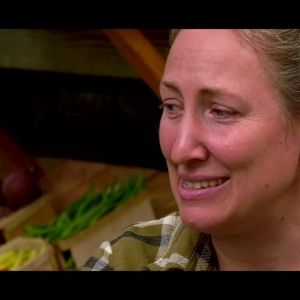Other Ag News: Examining the Latest Agricultural Census Data
Editor’s Note: This blog post is the first in a two-part series through which NSAC examines the latest Census of Agriculture in more detail. This post explores some of the high-level themes from across the Census, while the subsequent post will take deeper dives into conservation and local foods.
Last month, the U.S. Department of Agriculture (USDA) released the 2022 Census of Agriculture. The Census of Agriculture, which has been conducted since 1840 and currently is updated once every five years, serves as perhaps the primary data source for understanding the state of U.S. food and agriculture and is a critical tool for farmers, researchers, and stakeholders because of the wealth of data it contains about everything from farmer demographics to cover crop acreage.
In remarks made on February 13 while releasing the new Census data, Secretary of Agriculture Tom Vilsack directed attention to the loss of farmland and farms since the 2017 Census saying:
“What you find is in 2017 there were 2 million farmers, today the survey report shows we have 1.9 million, 142,000 fewer farms in 5 years.” Vilsack continued by asking the gathered audience, “as a country are we ok with losing that many farms, are we okay with losing that much farmland, or is there a better way?”
The disappearance of farms has been a decades-long trend and is commonly traced back to Secretary of Agriculture Earl Butz’s 1973 encouragement of farmers to “get big or get out.” While perhaps unsurprising, this continued trend remains troubling, and is one that NSAC is actively working to address through our federal policy advocacy, asking Congress to prioritize the passage of a strong farm bill to ensure that federal programs – from the farm safety net and conservation programs to programs that invest in local and regional food systems – are consistently accessible for all.
Separately, the Secretary highlighted the increasing average age of farmers in the United States. In 2022, the average age of all U.S. farm producers was 58.1 years, up 0.6 years from 2017, continuing a long-term trend of aging in the U.S. producer population. Additionally, the number of producers between the ages of 35-64 declined by 9%, and the number of producers 65 and over increased by 12%.
One bright spot is the significant increase in young producers since the 2017 Census. The data show a 7% increase in farmers under 44 with the largest jump among the youngest producers, those under 25 years of age. Furthermore, new and beginning producers, defined as farmers and ranchers who have operated a farm or ranch for not more than 10 consecutive years, increased in both the number of producers and the share of all producers. Slightly over 1 million of the 3.4 million producers in 2022 have farmed for less than 10 years.
Larger and FewerOverall, as noted above, the 2022 Census of Agriculture reports that the total number of farms is down nationwide, while the average size of farms continues to increase. As of 2022, there were 1.9 million farms and ranches across the U.S. – a decrease of 6.1 percent over the past 5 years and almost double the rate of decline seen between the 2017 and 2012 census. At the same time, the average size of farms increased slightly to 463 acres, a trend that has continued since the 2012 Census.
While the total number of farm operations shrank markedly, the overall value of all agricultural production decreased only slightly – meaning that as 100,000+ small and medium-sized farms transitioned out of farming over the past five years, their land and production were folded into larger and larger operations. This trend towards increased consolidation is also evident from looking at trends across farm sizes. Over the last five years, all categories of farms declined, except the two largest categories: farms with farms with sales between $1-4.9m and farms with sales over. See the chart below.
Source: U.S. Department of Agriculture – National Agricultural Statistics Service Increase in Farm Sales, Income, and Farm ExpensesOverall, both net farm cash income and expenses per farm have increased significantly since 2017. Average net farm cash income was $80 million, up 46% since the last census. Farm expenses averaged $2.2 million, up 28% from $1.6 million in 2017. It is important to note that the 2017 Ag Census came at a time where the data clearly reflected the realities of a sluggish farm economy. In the past several years, farm income and expenses have reached record highs and are projected to level out over the next 2-3 years.
- In 2022, U.S. farms and ranches produced $543.1 billion in agricultural products, up from $388.5 billion in 2017.
- The total value of crop commodities in 2022 was $281 billion, up 45% from 2017. For livestock, the value was $262 billion, up 35%.
- Large farms ($5 million or more in sales) accounted for 42% of all sales, up significantly from only 35% in 2017, despite being just one percent of all farms. Small farms ($50,000 or less in sales) made up 74% of all farms and yet only contributed to 2% of all sales in 2022.
- Over half of all sales, 55%, came from just 10 states, with California remaining on top as the largest producer at $59 billion. Iowa ranks second at $44 billion, with Texas, Nebraska, and Minnesota rounding out the top five.
Beginning Farmers
The 2022 Ag Census saw an increase in the total number of New and Beginning Producers. Slightly over 1 million of the 3.4 million producers in 2022 were beginning farmers. Their average age was 47.1, and their farms were smaller than average in both acres and sales. In addition, there was an over 10% increase in beginning farmers since 2017.
- The average age of a beginning farmer was 47.1, 11 years younger than the average farmer.
- Farms with young producers manage 105 million acres or roughly 12% of all land in farms. Similar to the overall data, the farm size category that included the most farms with young producers was 10-49 acres.
- The amount of land and farms where at least one of the producers is a beginning farmer or rancher went up slightly – from 193.4 million acres to 196.5 million. There was an increase of nearly 33,000 farms owned or leased by beginning farmers.
- The top three states for beginning farmers were Rhode Island, Alaska, and Maine with 41% of all farmers in Rhode Island having farmed for less than 10 years.
Producers and Farms by Ethnicity and Race
One of the most alarming statistics to come out of the 2022 Census was the loss of Black farms. Farms with at least one producer reporting as Black decreased by 13% between 2017 and 2022, from 32,910 farms in 2017 to 28,723 in 2022. This is nearly double the percentage of overall farm loss in the US. The statistics in this next section pertain to farms with at least one producer reporting their race as follows:
- 96% of farms in the US report at least 1 producer as white.
- The number of farms across demographics showed a decrease since 2017 with the exception of Asian and Native Hawaiian or Other Pacific Islander farms:
- 7% loss of farms in the US
- 7% loss of White farms
- 13% loss of Black farms
- 5% loss of Native American farms
- 3% loss in Hispanic, Latino, Spanish farms
- 2% increase Asian farms
- 8.7% increase in Native Hawaiian or Other Pacific Islander
Organic Production
While the 2017 Census found robust growth in organic production in terms of sales, number of certified farms, and acres transitioning to organic, the 2022 Census saw a decline in the number of National Organic Program (NOP) Certified Organic Farmers (4% decrease) and an even steeper decline in the number of farms with acres transitioning to organic (43% decrease). This decrease comes in despite the significant increase in the sale of organic commodities since the 2017 census (24% increase).
- There are 17,048 certified organic farm operations in the U.S., a decrease of 4% since 2017. However, when including organic operations exempt from NOP certification, the decrease was 7%.
- Sales of organic commodities were valued at $9.6 billion.
- 2,125 farms were transitioning acreage into certified organic production in 2022, a 43% decrease since the last Census.
For more on the 2022 Census of Agriculture stay tuned to the NSAC blog, and check out the following resources:
The post Examining the Latest Agricultural Census Data appeared first on National Sustainable Agriculture Coalition.
Signup for the Ag Newsletter
Get the freshest farm news, events and updates from in and around Cattaraugus County, NY at least once a month! Go signup!
Other ways to stay connected:
Get Involved in Farming
Resources for Starting a Farm in Cattaraugus County
Profile of Cattaraugus County soils
Agriculture Career Exploration
Questions about farming? Find out Who to Call











